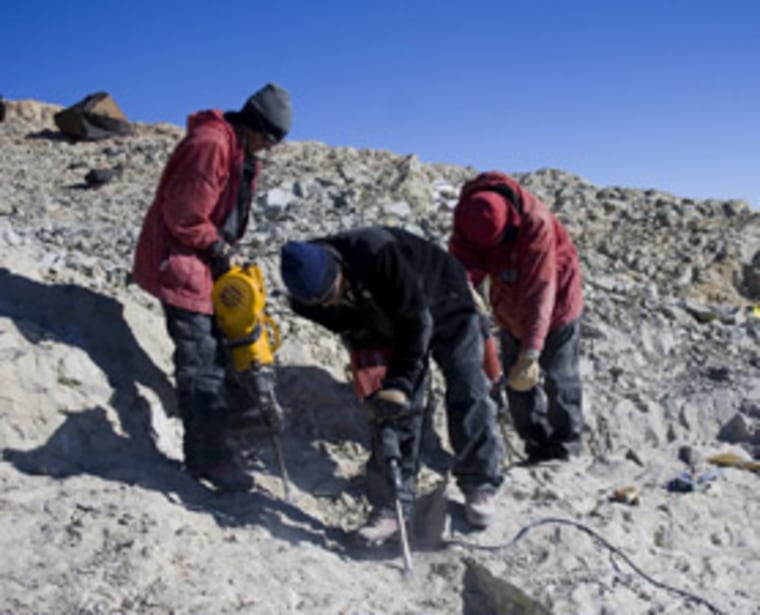Paleontologists working high in a remote range of Antarctic mountains have found a new species of primitive dinosaur dating back to nearly 200 million years ago — a time when one of the coldest parts of the world was a temperate forest.
William Hammer of Augustana College found the new creature — a four- to five-foot ornithischian or bird-hipped dinosaur that he believes is related to the fabrosaur or heterodontosaur.
These dinosaurs were the forerunners of the bigger and more spectacular ornithischians like stegosaurus, ankylosaurus and the duck-billed dinosaurs.
The fossils came from a site on Mount Kirkpatrick, in the Central Trans-Antarctic Mountains, which divide east and west Antarctica. It's the same place where Hammer and colleagues found Antarctica's first dinosaur in 1990 — the 22-foot, meat-eating Cryolophosaurus, or "frozen crested reptile."
Hammer found more parts of that dinosaur as well as a large sauropod, or plant-eater, resembling a diplodocus, and the new, as-yet-undescribed ornithischian.
"I don't know if we have a head, but we have a leg and a foot," he said. "It will take us a year to get a handle on what we've got."
Hammer and several fellow researchers camped at Beardmore Glacier at 6,600 feet for nearly two months. Each day fossil-hunting crews would be flown up by helicopter to the fossil beds at 12,500 feet elevation.
The new find could fill in gaps in the evolution of dinosaurs as well as the Antarctic environment, according to Thomas Holtz, professor of geology at the University of Maryland.
"This is a time when dinosaurs had just taken over," Holtz said. "They are the rabbits of the plant-eating dinosaurs: small, common, fairly fast, and they didn't have a lot of armor. They almost never show up in the movies or nobody makes plastic toys of them, but they are the stock from which the greatest plant-eating dinosaurs evolved."
Fossil-hunting in Antarctica is extremely difficult. Scientists have only a three-month window to work each year before the long winter sets in, and that window can be shortened by how hard it is to get there.
Hammer said he had been trying to return to the site since he found the earlier dinosaurs in 1990, but a 2003 visit was cut short because of bad weather and helicopter problems.
"Anytime we can find fossils there it's a brand new species," Holtz said. It's not like some random farmer can stumble across something in the ground, it's practically unexplored territory."
